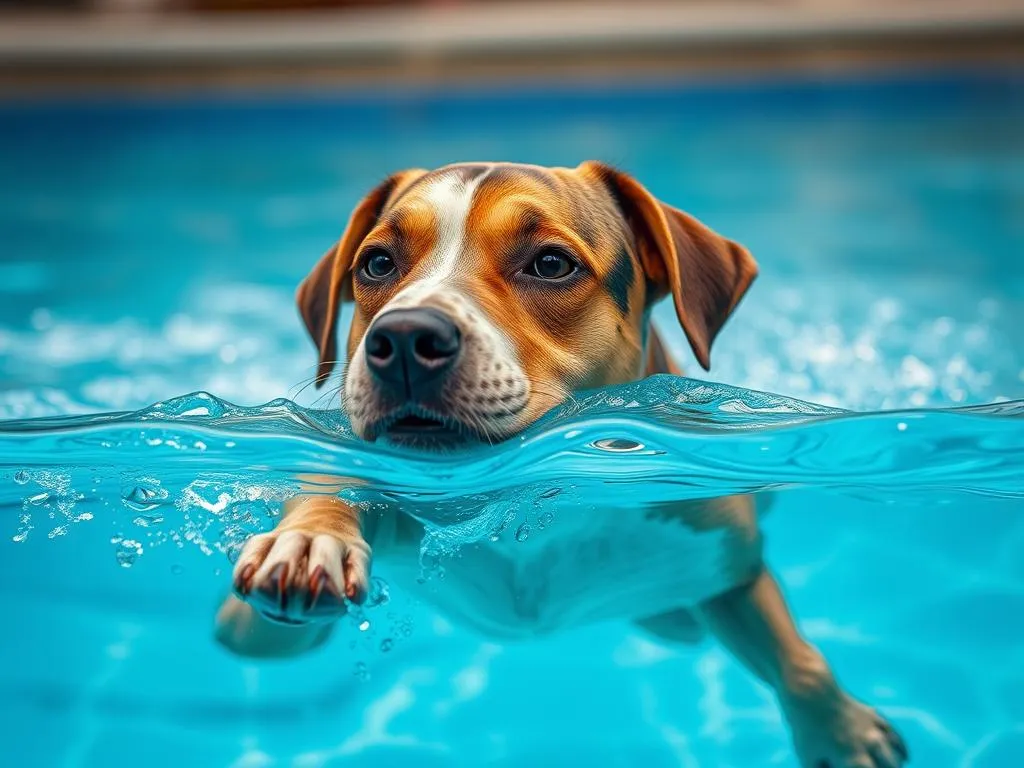
Swimming can be a fantastic activity for dogs, offering numerous benefits such as exercise, mental stimulation, and a great way to cool off during hot weather. However, not all dogs instinctively take to the water. In fact, some may have a fear of swimming that needs to be addressed. Understanding how to get your dog to like swimming can transform your summer adventures and strengthen the bond between you and your furry friend.
Understanding Your Dog’s Fear of Water
Common Reasons Dogs Fear Water
Fear of water can stem from various factors. Some dogs may have had a past traumatic experience, such as near-drowning incidents, which makes them wary of water. Others may not have been exposed to water during their puppyhood, leading to unfamiliarity and anxiety. Additionally, certain breeds, like retrievers and spaniels, have a natural inclination to swim, while others may be more hesitant due to their genetic predispositions.
Recognizing Signs of Fear
Identifying signs of fear in your dog is crucial for addressing their apprehension. Body language indicators include a lowered tail, tense posture, and whining. On the behavioral side, a dog that avoids water or tries to escape when near it is likely expressing fear. Being observant of these signs can help you tailor your approach to meet your dog’s needs.
Preparing for Swimming
Assessing Your Dog’s Readiness
Before plunging into swimming lessons, it’s essential to assess your dog’s readiness. A physical health check with your veterinarian can rule out any underlying issues that may affect their swimming ability. Age is also a factor; puppies and older dogs may require special considerations, so understanding their developmental stage is crucial.
Choosing the Right Location
Finding a safe swimming spot is essential. Look for dog-friendly beaches, lakes, or pools designed for pets. Beginners should start in shallow water, where they can gradually acclimate without the risk of deep water anxiety. This approach allows your dog to build confidence in a controlled environment.
Essential Gear
Equipping your dog with the right gear can significantly enhance their swimming experience. A dog life jacket is a great investment, especially for inexperienced swimmers, providing buoyancy and safety. Additionally, using a sturdy leash and collar will help maintain control. Incorporating water toys can also make the experience more enjoyable and encourage your dog to enter the water.
Gradually Introducing Your Dog to Water
Start with Familiarization
Begin by allowing your dog to explore the water’s edge. Let them sniff around and get accustomed to the surroundings. Using treats to create positive associations with water is an effective technique. Reward your dog for showing interest, and don’t rush the process—patience is key.
Progressing to Shallow Water
Once your dog is comfortable at the water’s edge, it’s time to encourage them to enter shallow water. Use toys to entice your dog into the water. Toss a favorite ball or floating toy just a short distance into the shallows. This will motivate them to wade in for their prize.
Building Confidence Through Play
Games can transform swimming into a fun activity. Engage your dog in fetch or playful splash games to make water enjoyable. Positive reinforcement—whether through praise or treats—will help solidify their comfort level and encourage them to associate water with positive experiences.
Swimming Techniques for Dogs
Teaching Basic Swimming Skills
Once your dog is comfortable in the water, it’s time to teach them the basics of swimming. Help your dog learn to paddle by gently supporting them as they splash around. A calm and supportive environment is crucial; avoid overwhelming them, and let them find their rhythm in the water.
Safety Tips While Swimming
Supervision is vital when your dog is swimming. Keep a close eye on them to ensure their safety. Be vigilant for signs of fatigue or distress, such as excessive panting, difficulty keeping their head above water, or a lack of interest in play. If you notice these signs, it’s best to take a break and reassess.
Managing Water Conditions
Understanding water conditions is equally important. Monitor water temperature to ensure it’s comfortable for your dog. Cold water can be a shock, while extremely hot conditions can lead to overheating. Additionally, be aware of currents and tides if you’re swimming in natural bodies of water, as these can pose risks for inexperienced swimmers.
Overcoming Challenges
Dealing with Reluctance
If your dog shows reluctance to enter the water, don’t force them. Instead, try techniques that encourage them gently. Gradually increase their exposure to water and celebrate small victories along the way. If they seem overwhelmed, it’s perfectly fine to take a break and try again later.
Addressing Behavioral Issues
Some dogs may exhibit aggression or anxiety around water. This behavior can stem from fear or past experiences. It’s crucial to address these issues calmly. If your dog displays aggression towards other dogs or people at the water, consider consulting a professional dog trainer who specializes in behavioral issues.
Celebrating Progress
Recognizing and celebrating progress is essential. Whether your dog tentatively steps into the water or dives in with enthusiasm, every step forward should be acknowledged. Sharing these experiences in the dog community can also provide encouragement and tips from other dog owners.
Long-term Swimming Habits
Incorporating Swimming into Routine
Making swimming a regular part of your dog’s routine can enhance their physical and mental well-being. Create a swimming schedule that fits your lifestyle, balancing swimming with other forms of exercise like walking or playing fetch. Consistency will help your dog view swimming as a normal and enjoyable activity.
Keeping Swimming Fun and Engaging
To maintain your dog’s interest in swimming, vary activities. Introduce obstacle courses in the water or set up playdates with other dogs who enjoy swimming. Regular positive reinforcement will keep their motivation high and encourage them to look forward to water play.
Health Benefits of Regular Swimming
Regular swimming offers numerous physical benefits, including improved muscle tone and endurance. It’s a low-impact exercise, making it suitable for dogs of all ages. Additionally, swimming can reduce anxiety and stress, leading to an overall increase in happiness and well-being for your dog.
Conclusion
Getting your dog to enjoy swimming is a rewarding journey that requires patience and understanding. By recognizing their fears, preparing adequately, and introducing them to water gradually, you can help them develop a love for swimming. Remember, every dog is different, and it’s important to take your time. The joy of swimming with your dog not only provides valuable exercise but also strengthens the bond you share, creating memories that will last a lifetime.
Encouragement and support will pave the way for a happy, confident swimmer. So grab your gear, head to the water, and enjoy the wonderful world of swimming with your furry companion!









